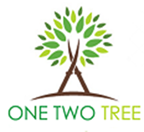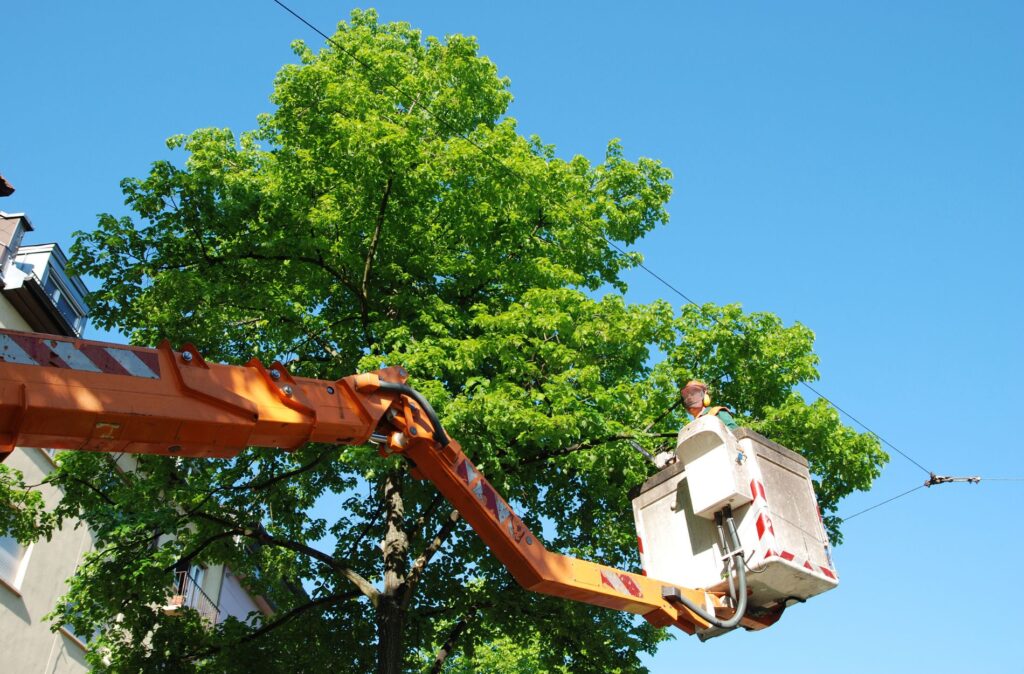Storms can cause significant damage to trees, leading to broken branches and even uprooted trunks. These issues not only pose a risk to your property but also threaten safety. By preparing your trees before a storm hits, you can reduce the chances of severe damage. Tree trimming plays a crucial role in keeping trees sturdy and less vulnerable to the harsh effects of wind and rain.
Regular trimming can help maintain the health and structure of your trees. By removing weak or dead branches, you reduce the risk of these branches breaking off during a storm. Healthy trees are more likely to withstand strong winds and heavy rainfall. Trimming helps guide the tree’s growth in a way that makes it more resilient to storms.
Proactive care of your trees can save you from costly repairs and potential hazards. Understanding how tree trimming contributes to storm damage prevention can help you protect your home and family. Let’s explore how keeping your trees well-trimmed can make all the difference when bad weather strikes.
Understanding the Risks of Storm Damage to Trees
Storms pose a significant threat to trees, especially if they have not been properly maintained. High winds can snap branches or even uproot entire trees, causing severe damage to homes, vehicles, and power lines. The extent of the damage often depends on the tree’s health and structure before the storm hits. Weak or diseased branches are the first to go, creating hazards that can lead to further destruction.
Trees with dense canopies are particularly at risk during storms. A thick canopy can catch the wind like a sail, increasing the chances of branches breaking. Furthermore, rain adds weight to the foliage, making branches more susceptible to snapping. Trees with heavy limbs hanging over structures or power lines are especially dangerous during storms.
Certain tree species are more vulnerable to storm damage than others. Fast-growing trees with soft wood, such as willows and poplars, are more likely to break under pressure. Understanding these risks helps highlight the importance of regular maintenance and trimming.
To mitigate these hazards, it’s crucial to assess your trees before the storm season begins. Look for signs of damage like cracks in the trunk or bark peeling, which indicate weaknesses. Address these issues proactively to minimize storm damage risks.
Benefits of Regular Tree Trimming
Regular tree trimming offers numerous benefits that extend beyond storm damage prevention. One of the primary advantages is improved tree health. By removing dead or diseased branches, you help the tree focus its energy on growing stronger, healthier limbs. This not only makes the tree more resilient during storms but also encourages better blooms and fruit production.
Trimming also enhances the tree’s structure. Well-pruned trees have a balanced form that allows them to withstand wind stress better. This structural integrity reduces the likelihood of branches breaking off during a storm. Additionally, trimming creates better air circulation within the canopy, which can help prevent diseases.
Safety is another significant advantage of regular trimming. By removing low-hanging or heavy branches, you reduce the risk of them falling and causing injury or damage. This is particularly important for trees near houses, driveways, or sidewalks.
Regular trimming also promotes aesthetic appeal. A well-maintained tree adds beauty and value to your property. By keeping trees neat and trimmed, you ensure they complement your landscaping while remaining safe and healthy.
In summary, regular tree trimming is an essential part of maintaining a safe and attractive yard. It prepares your trees to weather storms better while providing several additional benefits that improve their overall health and appearance. Keeping up with trimming schedules helps you enjoy beautiful, strong trees that stand the test of time and weather.
How Trimming Techniques Reduce Breakage
Proper trimming techniques play a vital role in reducing the risk of tree breakage during storms. One key method is crown thinning. Thinning involves selectively removing branches within the tree’s crown to reduce density. This technique allows wind to pass through the tree more easily, lessening the stress on its branches and reducing the likelihood of them snapping.
Another effective technique is crown raising. This involves removing lower branches to elevate the tree’s canopy. Crown raising is particularly useful for improving visibility and clearing obstacles like walkways or driveways. It also lowers the risk of branches breaking under heavy rain by shedding more water away from the main structure.
Selective pruning is crucial for shaping the tree and encouraging strong growth patterns. This involves cutting back weaker, competing branches to ensure that the strongest limbs receive enough light and nutrients. Focusing on these branches helps the tree develop a sturdy framework, making it more resistant to storm damage.
Lastly, crown reduction can be used to decrease the overall size of a tree. While not suitable for all species, this technique can help manage large trees that could pose risks in high winds. By shortening branches, it reduces the leverage and stress on limbs during storms.
Long-Term Safety and Property Protection
Consistent care in tree trimming not only helps during storms but also ensures long-term safety for your property. By keeping trees trim and healthy, you lower the risk of emergency situations caused by fallen branches or uprooted trees. Regular maintenance checks allow you to spot potential hazards early and address them before they become significant problems.
Tree trimming is part of a proactive approach to landscaping that prioritizes safety. When trees are healthy and well-shaped, they pose fewer threats to buildings, power lines, and people. Removing weak branches and reinforcing strong ones protects not just your trees but also the structures around them.
Furthermore, consistent tree maintenance helps maintain property value. A well-groomed landscape with healthy trees looks inviting and can increase the curb appeal of your home. Potential buyers appreciate the care that goes into property upkeep, which can influence their buying decisions.
Enlisting professional help for regular tree assessments ensures that your trees remain in top condition year-round. Trained arborists can identify problems that might not be obvious to the untrained eye, ensuring comprehensive protection for your home and family.
Conclusion
Trimming your trees is a simple yet effective way to safeguard your property against the damaging effects of storms. Regular maintenance not only boosts your trees’ health and appearance but also enhances safety for you and your loved ones. Keeping your trees in great shape helps prevent breakage, protects structures, and adds curb appeal to your home.
One Two Tree can help you achieve peace of mind and a beautiful yard. Our expert team specializes in storm damage prevention through professional tree trimming services in Atlanta. Contact One Two Tree today to keep your property safe and stunning all year round.

